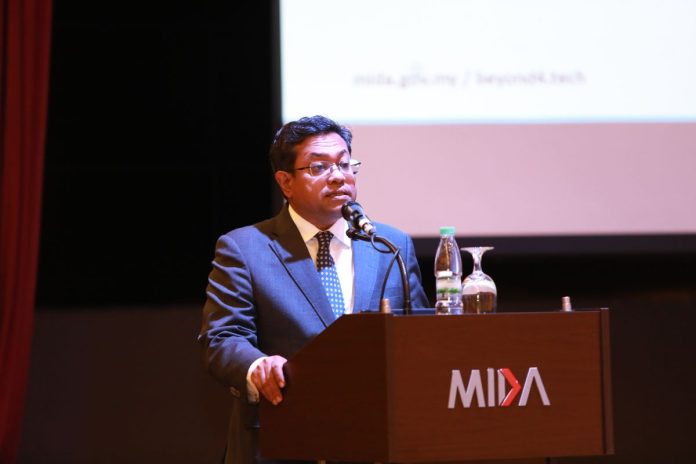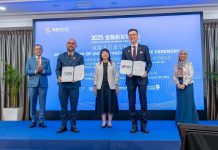Malaysia’s investment performance has proved remarkably resilient in a turbulent global environment. The country attracted RM285.2 billion in approved investments during the first nine months of 2025 (9M 2025), a 13.2% increase from the previous year. This strong showing comes at a time when geopolitical and trade tensions, supply chain disruptions, and tighter monetary conditions have dampened investment flows in many other markets, underscoring Malaysia’s enduring appeal as an investment destination.
The 4,874 approved projects span manufacturing, services, and primary sectors. The approvals cover a projected employment creation of 152,766 new jobs, reflecting the scale and sectoral breadth of investors’ interests in Malaysia’s economy.
Foreign Investments (FI) surged 47.5% year-on-year, with gains across all three (3) sectors: services climbed 122.0%, manufacturing advanced 9.2% and primary industries grew 56.6%. The strong performance reflects Malaysia’s competitive fundamentals and the industrial clusters being developed under the New Industrial Master Plan 2030. It also demonstrates the government’s success in fostering public-private collaboration and positioning the country as a regional hub for advanced manufacturing and sustainable industries.
For approved investments based on foreign sources1, Singapore accounted for the largest share of FI at RM52.7 billion, followed by the People’s Republic of China (RM35.8 billion), the United States of America (RM11.3 billion), the British Virgin Islands2 (RM6.6 billion), and Japan (RM4.8 billion). The composition reflects Malaysia’s strategic position between major economies, its role in supply-chain diversification efforts, and deepening market integration within ASEAN.
Johor recorded the highest value of approved investments (RM91.1 billion), followed by Selangor (RM51.9 billion), W.P. Kuala Lumpur (RM45.9 billion), Pulau Pinang (RM23.7 billion) and Kedah (RM17.5 billion).
Johor’s dominance is largely attributed to the Johor-Singapore Special Economic Zone (JS-SEZ) and its proximity to one of Asia’s most advanced economies. Two states under the Central Corridor region, Selangor and Kuala Lumpur, continue to benefit from established infrastructure and their role as Malaysia’s commercial and financial nerve centre. Penang’s strength lies in its mature electronics ecosystem, while Kedah is emerging as a beneficiary of northern corridor development initiatives.
Notable projects in Johor in the manufacturing sector includes Ferrotec Silicon Materials Malaysia Sdn. Bhd. investing RM256 million to expand its facility in Pasir Gudang, Johor. The plant will produce silicon products and components for semiconductor chips fabrication, supporting the precision manufacturing ecosystem that underpins Malaysia’s semiconductor industry. Meanwhile, URC Snack Foods (Malaysia) Sdn. Bhd. is undertaking a RM100 million expansion in Pasir Gudang, Johor, to increase its production capacity for chocolate and confectionery products, strengthening Malaysia’s role as a regional hub for snack food.
Focus sectors under the National Investment Aspirations (NIA) framework attracted RM137.9 billion, representing 48.4% of total approved investments. These 676 projects are expected to generate 49,488 jobs, demonstrating alignment between investment strategy and national development objectives.
Projects under the purview of the Ministry of Investment, Trade and Industry (MITI) and MIDA accounted for RM159.1 billion, or 55.8%. This includes 1,838 projects projected to create 75,068 jobs.

Senator Tengku Datuk Seri Utama Zafrul Aziz, Minister of Investment, Trade and Industry, described the performance as proof that Malaysia’s economic strategy is working. “RM285.2 billion in nine months is exceptional by any measure. While global capital flows are contracting elsewhere, Malaysia continues to attract quality investments at scale. This reflects the confidence investors have in our political stability and economic vision. When global investors look at Southeast Asia, they are increasingly choosing Malaysia. We are not just competing within ASEAN—we are setting the benchmark. Our focused execution of key missions under the New Industrial Master Plan 2030 is attracting investments, while delivering jobs and upskilling opportunities to power up our transition towards a high-value, knowledge-based economy.”
Between 2021 to September 2025, the National Committee on Investment approved 4,378 manufacturing projects. Of these:
● 85.0% of projects (3,724) have been implemented, which includes full-scale production, factory construction, and machinery installation.
● 12.0% remain in the planning phase, focusing on critical activities such as site selection and developer consultations.
● 3.0% of projects were not implemented due to a change of commercial direction by the investor(s).
Implementation rates for specific periods reinforce this credibility:
● Over 90% of manufacturing projects approved in 2021 until 2024 have been implemented.
● 87.2% of 2024’s and 58.7% of January – September 2025’s projects are already progressing, a commendable rate given that the manufacturing project was just recently approved and the average lead time of 18 to 24 months typical for such developments.
The consistently high implementation rates reflect investor confidence, policy stability, efficient investor support services, and effective inter-agency coordination. The MADANI Government’s strategic reforms, crystal-clear focus on high-impact sectors, and streamlined investor facilitation are ensuring that each project creates quality employment, builds capacity, and contributes to a sustainable, high-value economy. This whole-of-government approach positions Malaysia as a preferred destination for quality investment for generations to come.




